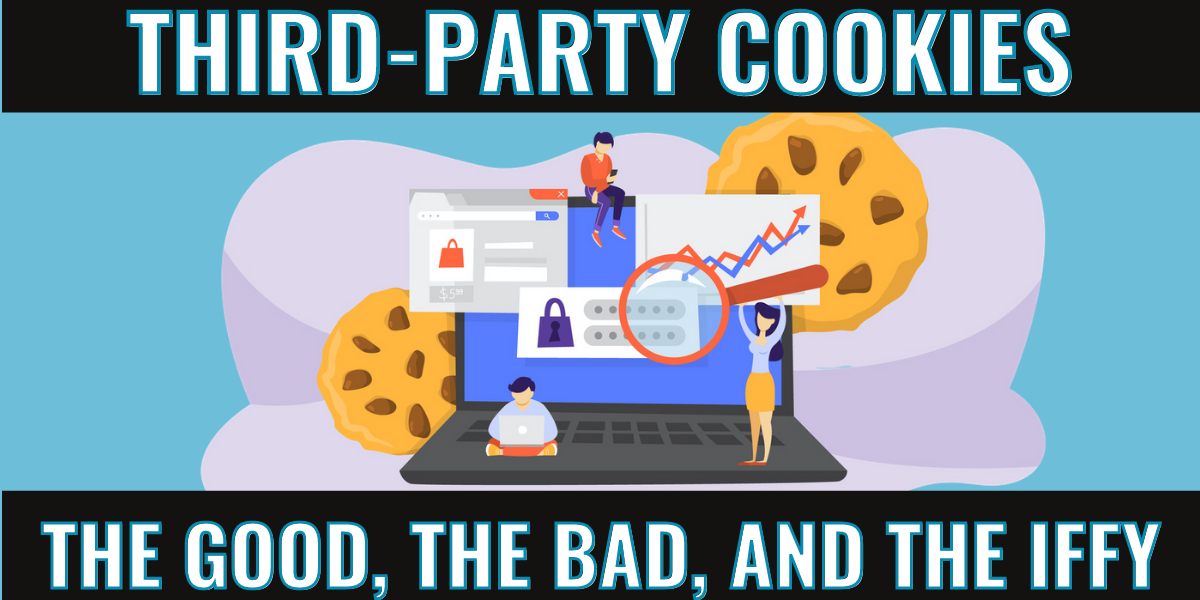Third-party cookies are in the throes of a slow and painful — particularly for advertisers — demise. But, what is all the buzz surrounding them in the news lately? More and more platforms are doing away with reliance on third-party cookies: iOS 14.5 started the trend and recently Chrome also announced that they’ll start banning them.
The latter was met with a recent change of events, in which Google announced it would be pushing back their third-party cookie block to late 2023 in order to give advertisers more time to prepare. They’ve also paused testing of their FLoC (Federated Learning of Cohorts) technology, which is intended to be a cookie-less alternative that still allows advertisers to target, but gives users more anonymity.
Before we get into the various narratives surrounding The Great Cookie Debate, however, let’s get into a brief breakdown of how the cookies in question work.
The Core Concepts of Cookies
Cookies are essentially packets of data that get stored on your browser when you visit a website. The way they’re used depends on the type of cookies they are: first-party vs. third-party.
Third-party cookies are currently the ones under fire. These cookies are created by a website other than the one you’re visiting. They assign users with a unique ID number that is used to identify them across different domains. By tracking a user’s activity across different places on the internet, advertisers can then use this data to create retargeting ads.
First-party cookies are used by the publisher of a website to customize the user’s experience within the website itself. You’ll often see pop-ups at the bottom of various webpages about whether or not it’s okay for those cookies to track your activity.
 Source: TrenDemon
Source: TrenDemon
This data is then used for features like related articles, auto-login, etc. These cookies are not going anywhere any time soon.
Why are Third-Party Cookies “Bad”?
The primary concern surrounding third-party cookies comes down to security. The news over the last decade — or even longer — has been dominated by stories about government surveillance and data breaches. People don’t trust anyone with their data anymore.
When used the way they’re intended, cookies don’t really pose any kind of security threat. Advertisers only care about data groups and where to serve ads. There does seem to be a perception of third-party cookies as some kind of virus or malware, and that’s not really the case. If the data falls into the wrong hands though, it can be used to do harm.
The second main concern is privacy. Simply put, people don’t like the idea of invisible trackers telling companies what they do on the internet, whether it can be used to harm them or not. And while the truth is that most advertisers just want to know your shopping habits — not necessarily the nitty gritty of your internet history — it still feels like a violation to many.
Transparency plays a large role here. Third-party cookies can be very hard to detect if someone doesn’t know what they are or how to find them. And for years, there wasn’t really anything the average user could do about it.
Marketing & Third-Party Cookies
The move to do away with third-party cookies is hardly a recent development. Starting with the EU’s General Data Protection Regulation (GDPR), there’s been a massive crackdown in recent years. Following the passing of GDPR, implicit opt-in — opting users into tracking by default — was ruled illegal by Europe’s highest court.

And the truth is: third-party cookies are an imperfect tracking solution as it is. Firstly, it’s based on devices, not people. Secondly, it can very easily be removed — and often is, directly in browser settings. As marketers increase their reliance on first-party cookie data, they may actually be able to still run effective ad campaigns. Of course, the first step is to beef up your first-party data collection strategies.
Start working on growing your email list, sending out more customer surveys, setting up a CRM, and just finding more ways in general to solicit information from your customers (and potential customers) without having to be sneaky about it.







